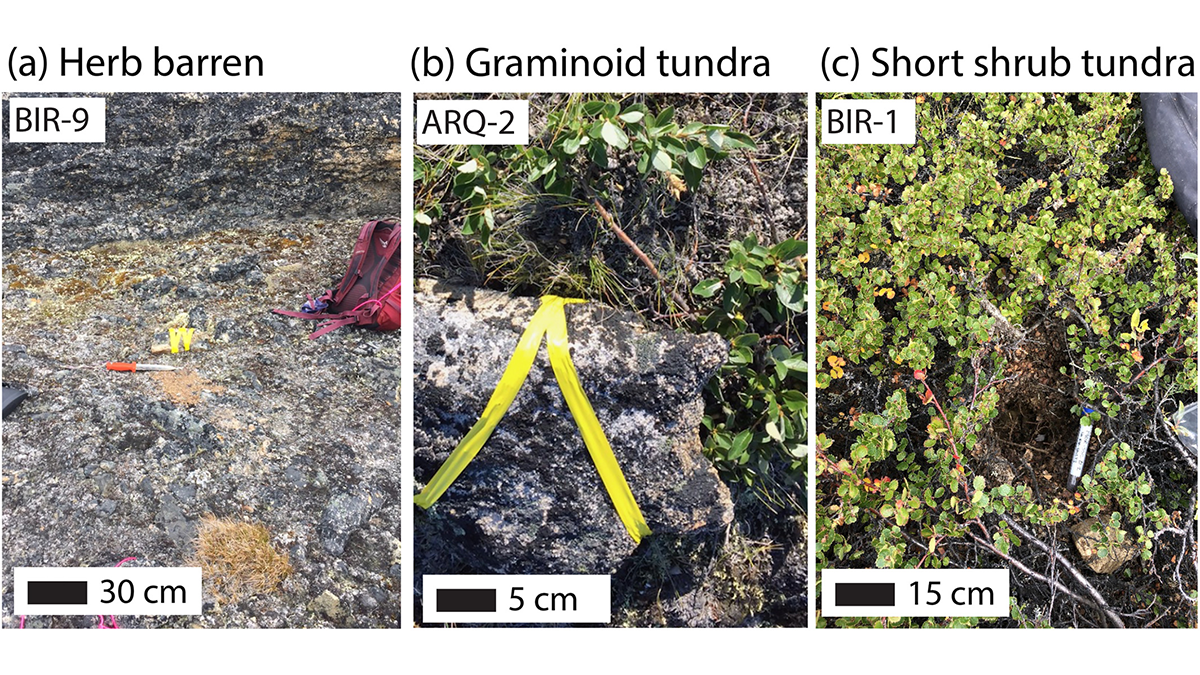Editors’ Highlights are summaries of recent papers by AGU’s journal editors.
Source: Journal of Geophysical Research: Biogeosciences
Over the past 50 years, the Arctic has been warming at three times the speed as the rest of the globe. A large portion of the surface of this area is covered by persistently frozen soil known as permafrost. Rapid thaw of the permafrost has broad implications for soil carbon emissions, vegetation shifts, ground stability, and water bodies including downstream effects to wildlife, people, and climate. However, the rate of permafrost thaw across the Arctic is highly variable and difficult to predict, owing to the interactive effects of vegetation, snow, and microtopography.
Evans et al. [2022] report on a new experiment of ground temperature measurements made at nearly two dozen short-stature ground cover and shrub vegetation locations across Baffin Island, Canada. The initial hypothesis expected a strong role of vegetation structure on ground temperature through its influence on shading and snow accumulation. Instead, by calibrating a statistical model with these observations, the authors find a stronger effect of snow duration. This work provides a basis for improved prediction of permafrost thaw across the Arctic.
Citation: Evans, S. G., Raberg, J. H., Crump, S. E., Raynolds, M. K., Sugg, M. M., Brodie, A. R., & Miller, G. H. (2022). Control of short-stature vegetation type on shallow ground temperatures in permafrost across the eastern Canadian Arctic. Journal of Geophysical Research: Biogeosciences, 127, e2022JG006941. https://doi.org/10.1029/2022JG006941
—Ankur R. Desai, Editor, Journal of Geophysical Research: Biogeosciences

